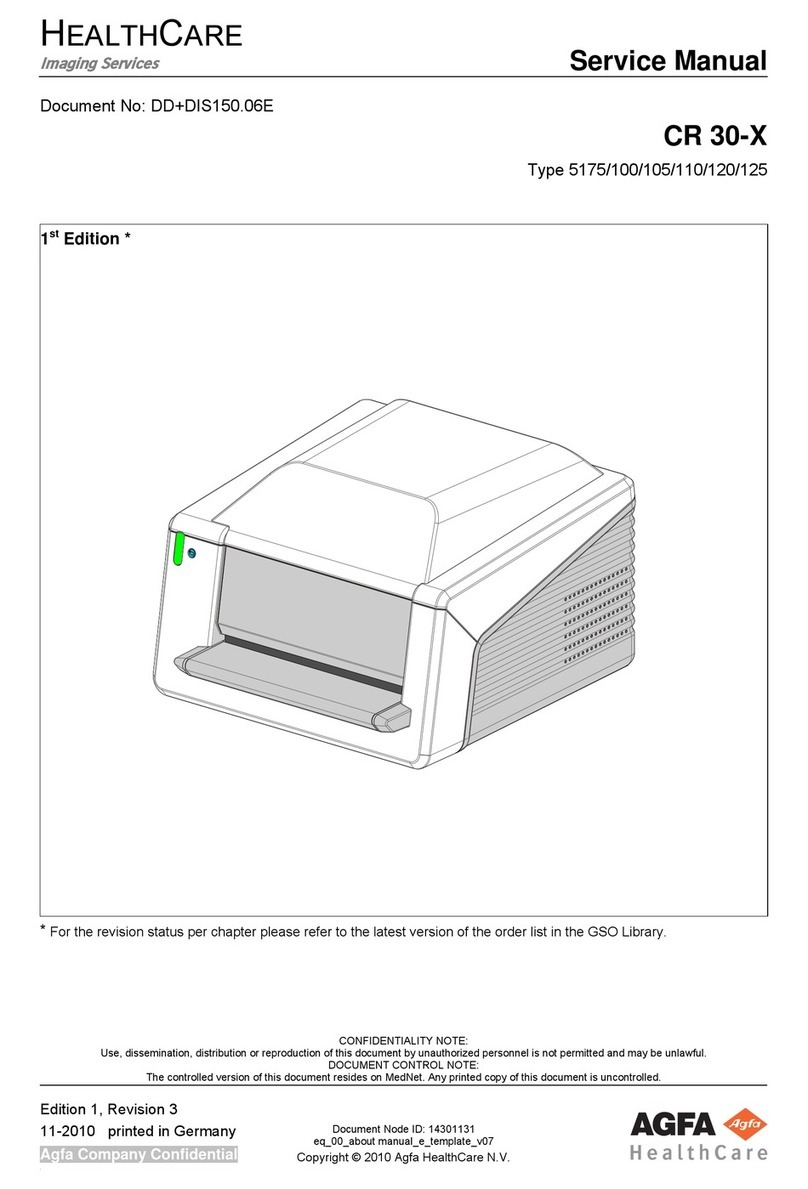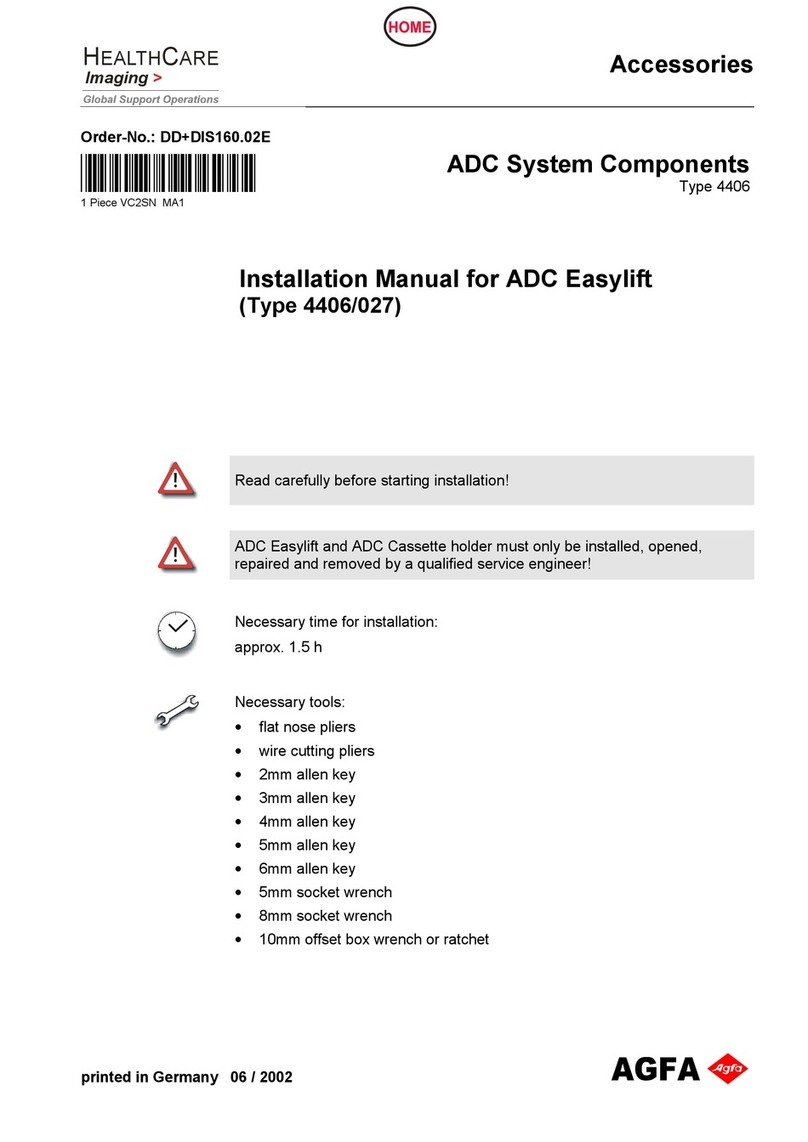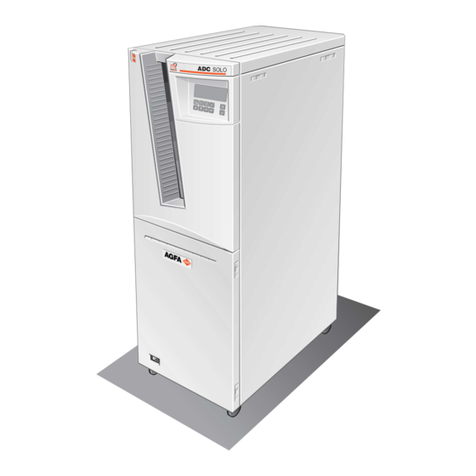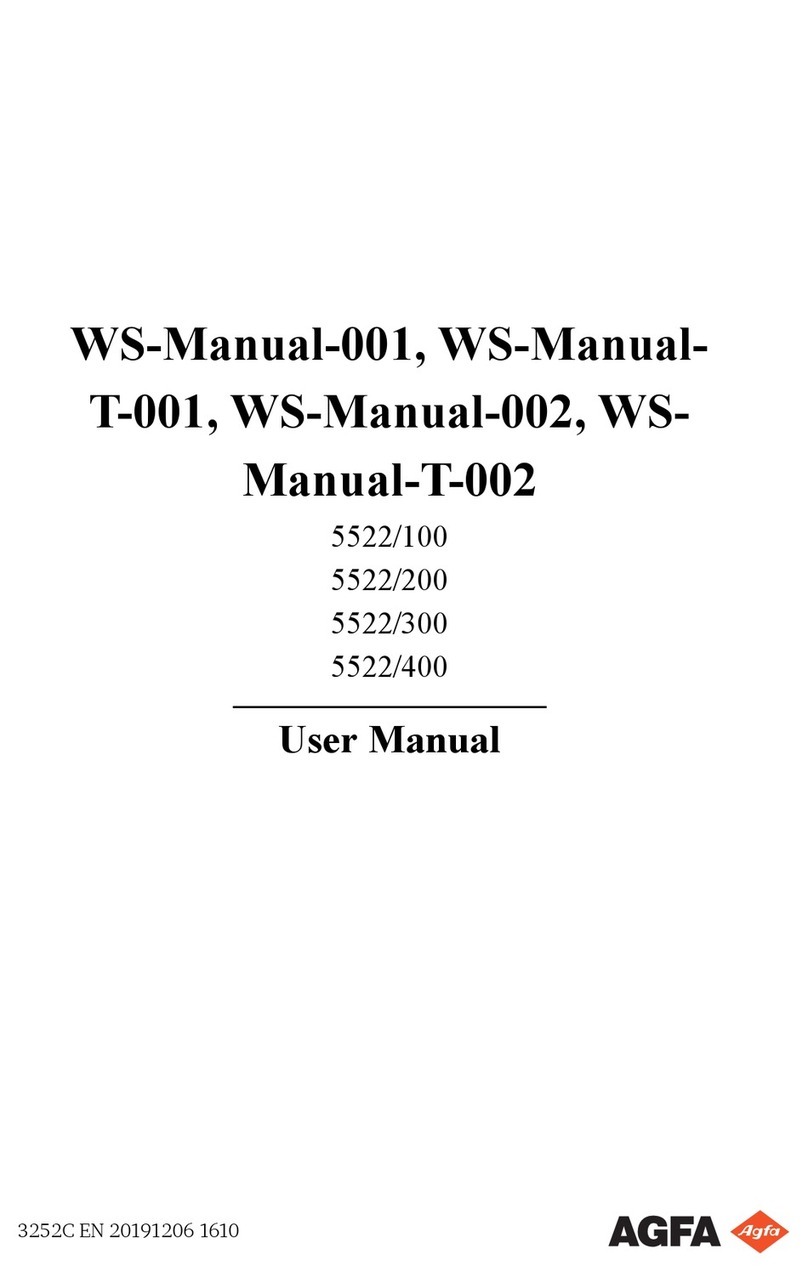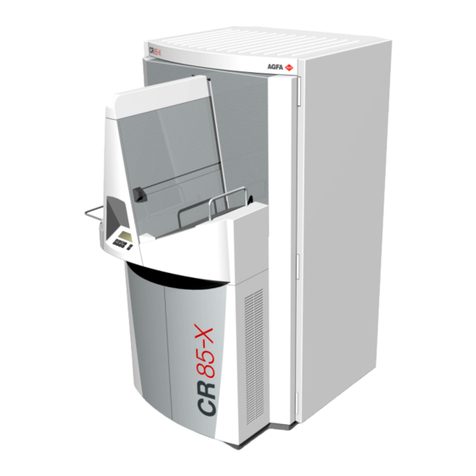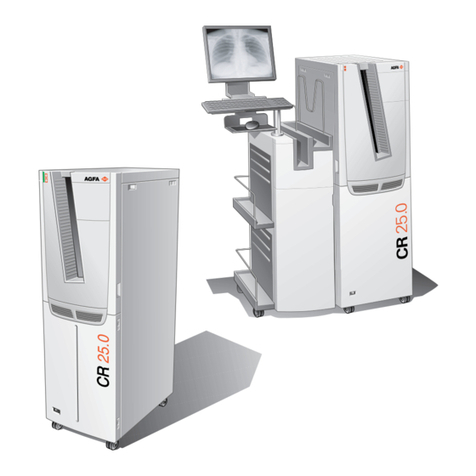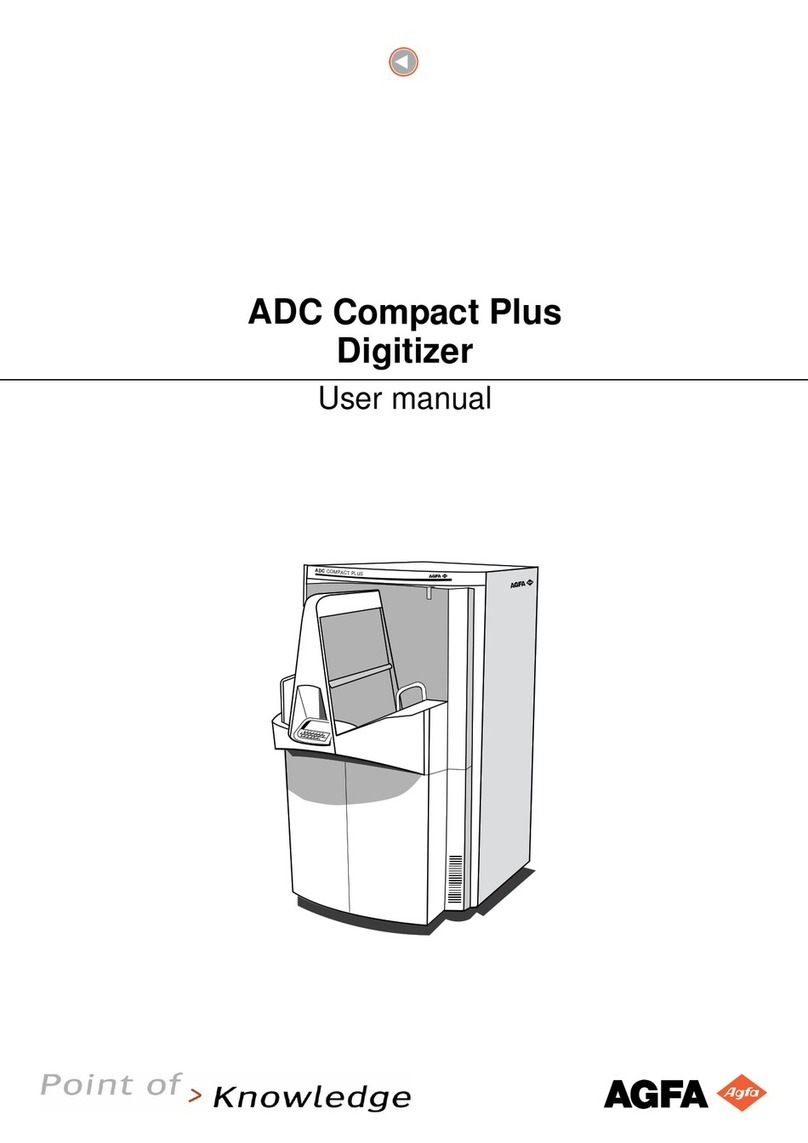
82241A EN 20040210
Safety precautions
General safety instructions
•For software and other technical platforms, and/or in combination with any
consumable, which constitute, after installation, a system for the interpretation of
medical image data: such system is used by trained and qualified professionals.
It is the user's responsibility to ensure that image quality, display quality,
environmental lighting and other possible distractions are consistent with the
clinical application.
The user must be aware, that automatic collimation could possibly lead to
misinterpretation of the image.
•Make sure that the CR 75.0 is constantly monitored in order to avoid
inappropriate handling, especially by children.
•Only trained service personnel must make repairs. Only authorized service
personnel must make changes to the CR 75.0.
•If there is any visible damage to the machine casing, do not start nor use the
CR 75.0.
•If you want to connect the CR 75.0 with other devices, components or
assemblies and if the technical data do not permit determining whether the
combination with these devices, components or assemblies involves hazards,
you must consult the respective manufacturers to avoid danger for operating
personnel or the environment.
•Do not override or disconnect the integrated safety features.
•As is the case for all technical devices, the CR 75.0 must be operated, cared for
and serviced correctly.
•If you don’t operate the CR 75.0 correctly or if you don’t have it serviced
correctly, Agfa-Gevaert is not liable for resulting disturbances, damages or
injuries.
•When installing the CR 75.0, care must be taken to ensure that there is either a
mains plug or an all-cable disconnecting device in the internal installation fitted
near the CR 75.0 and that it is easily accessible.
•If you notice conspicuous noise or smoke, disconnect the CR 75.0 immediately.
•Check that the mains voltage is within the specified range of the self adapting
power supply of the machine.
Markings and labels
Always take into account the markings and labels provided on the inside and
outside of the machine. A brief overview of these markings and labels and
their meaning is given below.












